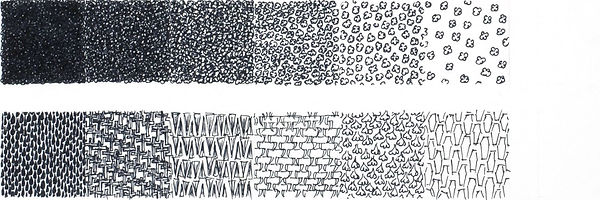Value and Shading
When you draw something with a pencil, it often starts off as a shape.
Shape is one of the Elements of Art; you find shape in negative and positive spaces. Shapes usually can broken down into simpler shapes, such as triangles, circles and rectangles.
When the shape has a volume or looks 3D, then the element of art we start to see is actually called form.
Form happens when you work with actual sculptures, like clay or found objects, but also when you are able to properly shade a two-dimensional object.
For the shape to look realistic, however, you first have to consider where the light comes from!
The CONSISTENCY of your light is most important for the success of your form.
Let's watch a video about form and shading to understand this a little better!
The first step in shading something is, of course, being able to control your art materials and actually achieve different shades of gray. When using pencils, it helps to know what the numbers on your pencils mean.
B stands for BLACK. The highest the number of your B, the darkest and softest your pencil will be. In our kits, the softest and darkest pencil is 6B.
H stands for hard. It is good for small details or things you don't want to get very dark, as well as doing your initial drawing.
HB, which is your usual yellow pencil, is an in-between -- a hard pencil that writes black. The 2 in front stand for the width of the graphite. You can also use it for sketching if you are comfortable with it. It will be a little softer than the HB pencil.

Let's try an exercise: get a set of shading pencils and try making 7 different shades of gray, from white (no shade) to black (full shade with 6B pencil). You can use the smooth technique as demonstrated, or any technique you like, including the ones shown below.


Now you are ready to try shading the Let's Get Shady sheet. Let's watch the video below and get started!
Let's get shady sheet